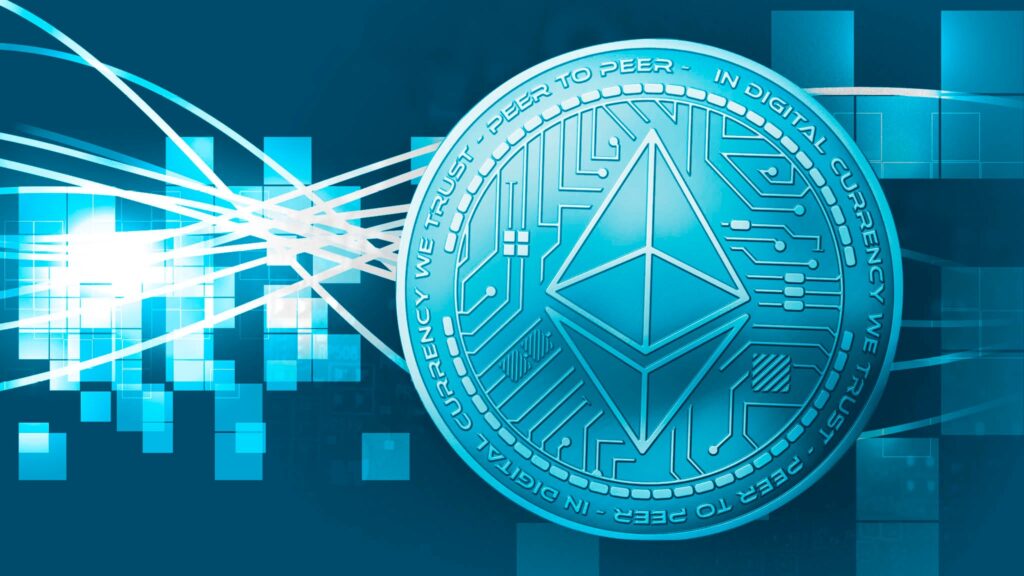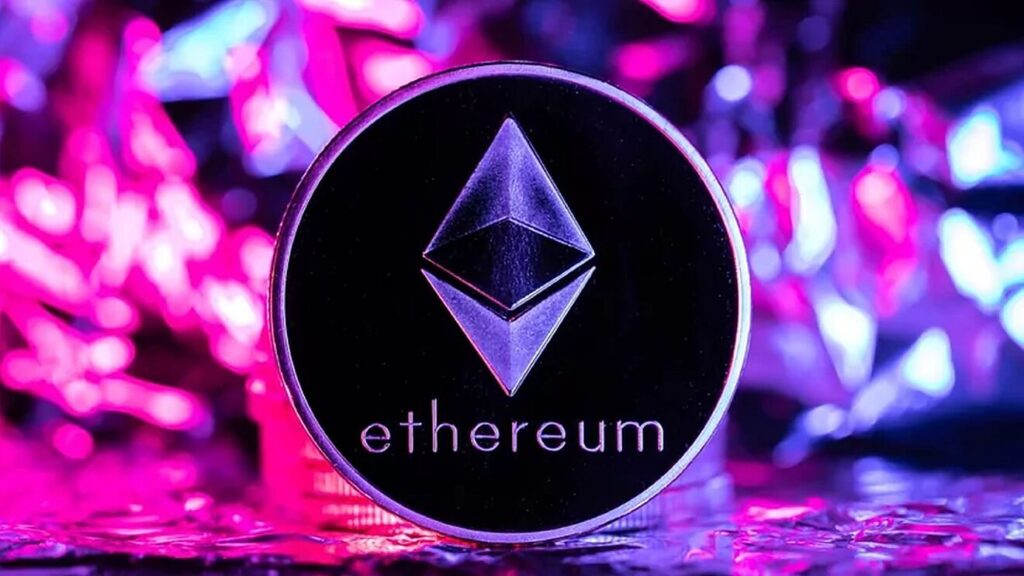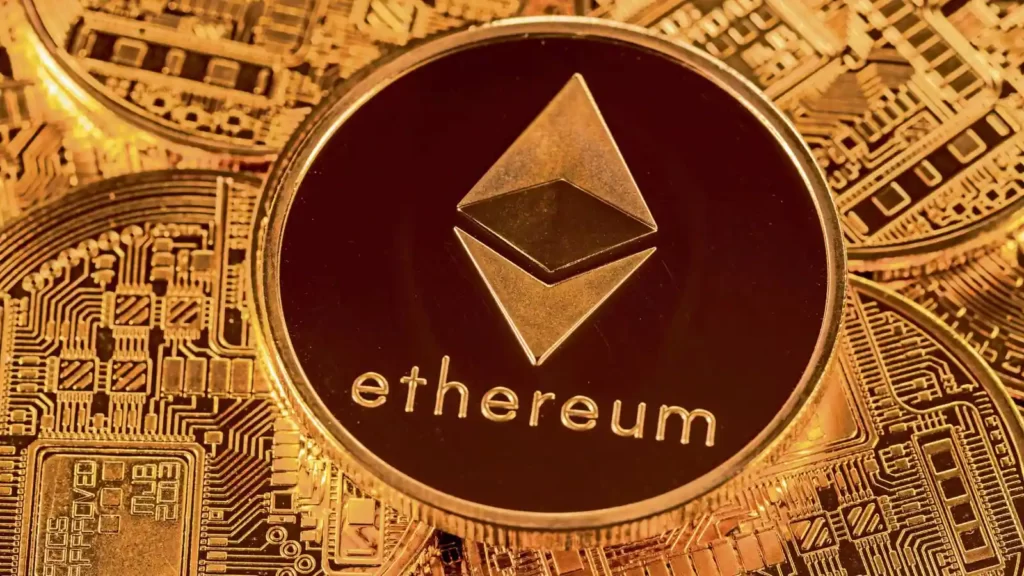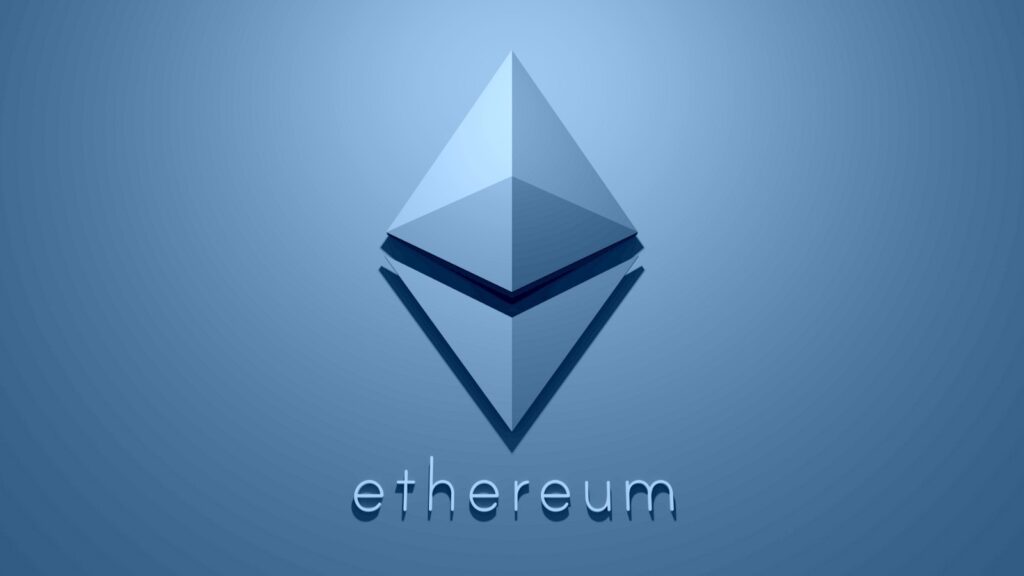About Ethereum In 2023: Ethereum is a decentralized computing platform that uses ETH (also called Ether) to pay transaction fees (or “gas”). Developers can use Ethereum to run decentralized applications (dApps) and issue new crypto assets, known as Ethereum tokens.

What is Ethereum?
Ethereum is a decentralized blockchain platform that establishes a peer-to-peer network that securely executes and verifies application code, called smart contracts. Smart contracts allow participants to transact with each other without a trusted central authority.
Transaction records are immutable, verifiable, and securely distributed across the network, giving participants full ownership and visibility into transaction data. Transactions are sent from and received by user-created Ethereum accounts. A sender must sign transactions and spend Ether, Ethereum’s native cryptocurrency, as a cost of processing transactions on the network.

Ethereum is a blockchain-based software platform that can send and receive value globally with its native cryptocurrency, ether, without any third-party interference. But it can also do much more than that. It all started in 2008 with Bitcoin. You could use it to send funds to anyone anywhere globally. What made crypto different from normal bank transfers or other financial services like Paypal or Alipay is that there was no middleman for the first time.
First proposed in 2013 by Russian-Canadian computer programmer Vitalik Buterin, Ethereum was designed to expand the utility of cryptocurrencies by allowing developers to create their own special applications. Unlike traditional apps, these Ethereum-based applications, called “decentralized applications,” or dapps, are self-executing thanks to smart contracts.

What is the difference between Ethereum and Bitcoin?
Launched in 2015, Ethereum builds on Bitcoin’s innovation, with some significant differences.
Both let you use digital money without payment providers or banks. But Ethereum is programmable, so you can also build and deploy decentralized applications on its network.
Ethereum being programmable means that you can build apps that use the blockchain to store data or control what your app can do. This results in a general-purpose blockchain that can be programmed to do anything. As there is no limit to what Ethereum can do, it allows for great innovation to happen on the Ethereum network.

While Bitcoin is only a payment network, Ethereum is more like a marketplace of financial services, games, social networks, and other apps that respect your privacy and cannot censor you.
Ethereum Denominations in 2023
| Name | Ethereum |
| Symbol | Ξ |
| Code | ETH |
| 1 ETH | 1,422.54USD |
| Ethereum Market Cap | $169.88B |
| Ethereum24H Volume | $684.27M |
| Development status | Active |
| Initial release | 30 July 2015; 7 years ago |
| Operating system | Cross-platform |
| Sector | Smart Contract Platform |

How does Ethereum work?
Ethereum-based apps are built using its key innovation: “smart contracts.” Smart contracts, like regular paper contracts, establish the terms of an arrangement between parties. But unlike an old-fashioned contract, smart contracts automatically execute when the terms are met without the need for either participating party to know who is on the other side of the deal — and without the need for any kind of intermediary.
There are three main types of nodes that operate on the Ethereum network.
Full nodes

These copy and verify all transactions on the Ethereum blockchain, as well as execute smart contract instructions known as opcodes. Full nodes shouldn’t be confused with miners.
Light nodes
These maintain only a partial record of the blockchain and request the rest of the data from full nodes. As the name suggests, these nodes can run on lighter devices such as mobile phones and don’t need to operate 24/7.
Full archive nodes
These store the entire history of the Ethereum blockchain, including previous “states” – or the information on the blockchain – and are used for tools like block explorers.

An easy way to understand the difference between miners and full nodes is to think of miners as archaeologists out in the field uncovering historical artifacts and full nodes as administrators at a national museum who maintain a record of all the archaeologists’ findings. The main difference between a full node and a full archive node is that a full archive node does everything a full node does but also compiles an archive of all previous states.
The Ethereum blockchain relies on miners to discover new blocks. These are like digital boxes that store transaction information and other data. Miners compete using specialized computing equipment to win the chance to be the next person to add a block to the chain and get rewarded with transaction fees and “block rewards.”

Why would I use Ethereum?
If you’ve ever sent money overseas or had to worry about the future of your assets due to external forces outside of your control where you live, or been fed up by the numerous restrictions and fees imposed by traditional financial institutions for everyday transactions, you might be interested in what cryptocurrencies have to offer.
Bear in mind that Ethereum is a story that is still being written, and many more reasons to use it are being uncovered as it evolves and develops over time.
Who runs Ethereum?

Ethereum is not controlled by any one entity. It exists solely through the decentralized participation and cooperation of the community. Ethereum makes use of nodes run by volunteers to replace individual servers and cloud systems owned by major internet providers and services.
These distributed nodes, run by individuals and businesses all over the world, provide resiliency to the Ethereum network infrastructure. It is therefore much less vulnerable to hacks or shutdowns. Since its launch in 2015, Ethereum has never suffered downtime. There are thousands of individual nodes running the Ethereum network. This makes Ethereum one of the most decentralized cryptocurrencies out there, second only to bitcoin.

Who created Ethereum?
In 2013, a 19-year-old computer programmer (and Bitcoin Magazine cofounder) named Vitalik Buterin released a whitepaper proposing a highly flexible blockchain that could support virtually any kind of transaction. In 2014, Vitalik, along with a team of cofounders including Gavin Wood, crowdfunded the development of the Ethereum protocol with the sale of $18 million in pre-launch tokens. In 2015, the first public version of the Ethereum blockchain launched in July, and smart contract functionality began to roll out on the Ethereum blockchain.
How does building on Ethereum compare to Hyperledger Fabric?

| Ethereum | Hyperledger Fabric | |
| Public vs. Private | Public | Private |
| Permissions | Permissionless | Permissioned |
| Governance | Decentralized | Federated |
| Consensus Mechanism | Proof-of-Work | Pluggable BFT |
| Smart Contract Languages | Solidity, Vyper | Go, Java, Javascript (Node.js) |
| Private Transactions | No | Yes |
| Ideal Use Cases | Tokenization (stablecoins, NFTs), DeFi, public transaction settlement | B2B data exchange, transaction settlement, and non-repudiation |
Features About Ethereum In 2023

- Ether: This is Ethereum’s cryptocurrency.
- Smart contracts: Ethereum allows the development and deployment of these types of contracts.
- Ethereum Virtual Machine: Ethereum provides the underlying technology—the architecture and the software—that understands smart contracts and allows you to interact with them.
- Decentralized applications (Dapps): A decentralized application is called a Dapp (also spelled DAPP, App, or DApp) for short. Ethereum allows you to create consolidated applications, called decentralized applications.
- Decentralized autonomous organizations (DAOs): Ethereum allows you to create these for democratic decision-making.
These are Ethereum’s essential features. Before going deep into the Ethereum tutorial, let’s discuss each of these features in more detail.

1. Ether
Ether (ETH) is Ethereum’s cryptocurrency. It is the fuel that runs the network. It is used to pay for the computational resources and the transaction fees for any transaction executed on the Ethereum network. Like Bitcoins, ether is a peer-to-peer currency. Apart from being used to pay for transactions, ether is also used to buy gas, which is used to pay for the computation of any transaction made on the Ethereum network.
2. Smart Contracts
Smart contracts are revolutionizing how traditional contracts work, which is why you need to use the tutorial to become more familiar with them. A smart contract is a simple computer program that facilitates the exchange of any asset between two parties. It could be money, shares, property, or any other digital asset that you want to exchange. Anyone on the Ethereum network can create these contracts. The contract consists primarily of the terms and conditions mutually agreed on between the parties.

3. Ethereum Virtual Machine
EVM, as mentioned above in this Ethereum tutorial, is designed to operate as a runtime environment for compiling and deploying Ethereum-based smart contracts. EVM is the engine that understands the language of smart contracts, which are written in the Solidity language for Ethereum. EVM is operated in a sandbox environment—basically, you can deploy your stand-alone environment, which can act as a testing and development environment. Once you write your smart contract in Solidity, that contract gets converted into the bytecode and gets deployed on the EVM, thereby guaranteeing security from cyberattacks.
4. Decentralized Applications (Dapps)
Let’s compare decentralized applications with traditional applications. When you log in to Twitter, for example, a web application gets displayed that is rendered using HTML. The page will call an API to access your data (your information), which is centrally hosted. It’s a simple process: your front end executes the backend API, and the API goes and fetches your data from a centralized database.

5. Decentralized Autonomous Organizations (DAOs)
A DAO is a digital organization that operates without hierarchical management; it works in a decentralized and democratic fashion. So basically, a DAO is an organization in which the decision-making is not in the hands of a centralized authority but preferably in the hands of certain designated authorities or a group or designated people as a part of an authority. It exists on a blockchain network, where it is governed by the protocols embedded in a smart contract, and thereby, DAOs rely on smart contracts for decision-making—or, we can say, decentralized voting systems—within the organization.
Real-World Applications of Ethereum
Voting Systems
As we’ve seen with DAO, voting systems are adopting Ethereum. The results of polls are publicly available, ensuring a transparent and fair democratic process by eliminating voting malpractices.

Banking Systems
Ethereum is getting adopted widely in banking systems because with Ethereum’s decentralized system; it is challenging for hackers to gain unauthorized access. It also allows payments on an Ethereum-based network, so banks are also using Ethereum as a channel to make remittances and payments.
Shipping
Deploying Ethereum in shipping helps with the tracking of cargo and prevents goods from being misplaced or counterfeited. Ethereum provides the provenance and tracking framework for any asset required in a typical supply chain.
Agreements
With Ethereum smart contracts, agreements can be maintained and executed without any alteration. So in an industry that has fragmented participants, is subject to disputes, and requires digital contracts to be present, Ethereum can be used as a technology for developing smart contracts and for digitally recording the agreements and the transactions based on them.

What about Ethereum’s energy consumption?
On September 15, 2022, Ethereum went through The Merge upgrade which transitioned Ethereum from proof-of-work to proof-of-stake.
The Merge was Ethereum’s biggest upgrade and reduced the energy consumption required to secure Ethereum by 99.95%, creating a more secure network for a much smaller carbon cost. Ethereum is now a low-carbon blockchain while boosting its security and scalability.
Check Also: 15 Amazing Features of Blockchain Technology
Frequently Asked Questions (FAQs)
What is the current price of Ethereum?
We update our Ethereum to INR currency in real time.
What is the market cap of Ethereum?
The current market cap of Ethereum is ₹14.07T. A high market cap implies that the market highly values the asset.
What is the all-time high of Ethereum?
The all-time high of Ethereum is ₹397,447.27. This all-time high is the highest price paid for Ethereum since it was launched.
What is the 24-hour trading volume of Ethereum?
Over the last 24 hours, the trading volume of Ethereum is ₹643.69B.
What other assets are similar to Ethereum?
Assets with a similar market cap to Ethereum include Bitcoin, Ethereum 2, Tether, and many others.
How many Ethereum are there?
The current circulating supply of Ethereum is 122 million.
What is the typical holding time of Ethereum?
The median time that Coinbase customers hold Ethereum before selling it or sending it to another account or address is 123 days.
What is the relative popularity of Ethereum?
Ethereum ranks 2 among tradable assets on Coinbase. Popularity is currently based on relative market cap.
What is the current trading activity of Ethereum?
Currently, 90% of Coinbase users are buying Ethereum. In other words, 90% of Coinbase customers have increased their net position in Ethereum over the past 24 hours through trading.
Can I buy Ethereum on Coinbase?
Yes, Ethereum is currently available on Coinbase’s centralized exchange.
What is the main use of Ethereum?
Ether is used mainly for four purposes: It is traded as a digital currency on exchanges, held as an investment, used to purchase goods and services, and used on the Ethereum network to pay transaction fees.
What is the ETH symbol?
Ether (Abbreviation: ETH; sign: Ξ) is the native cryptocurrency of the platform. Among cryptocurrencies, ether is second only to bitcoin in market capitalization. Ethereum was conceived in 2013 by programmer Vitalik Buterin.
